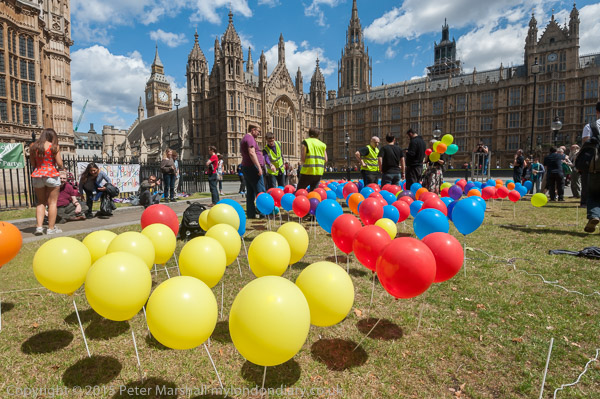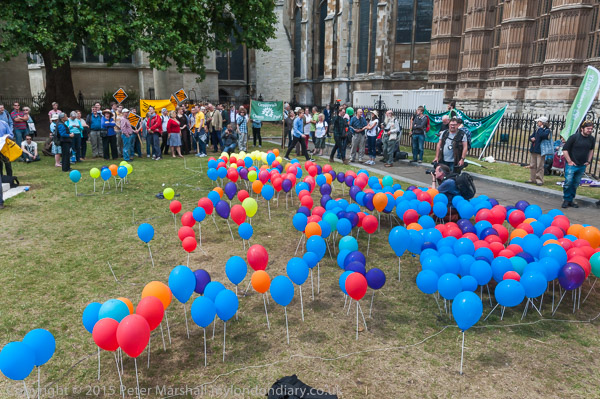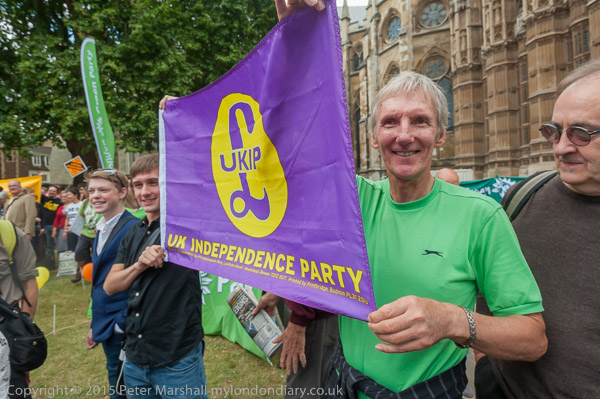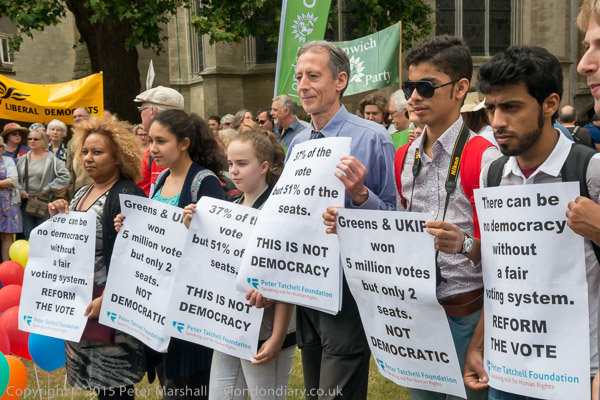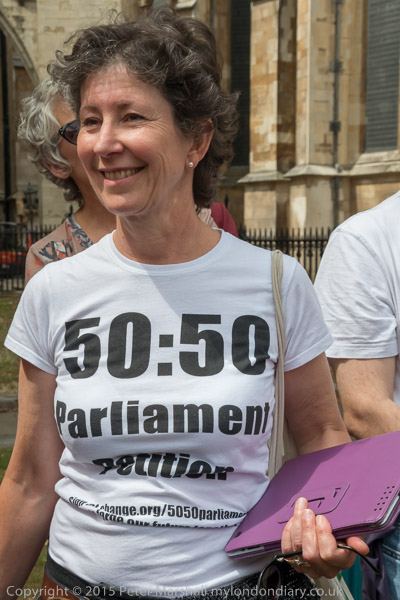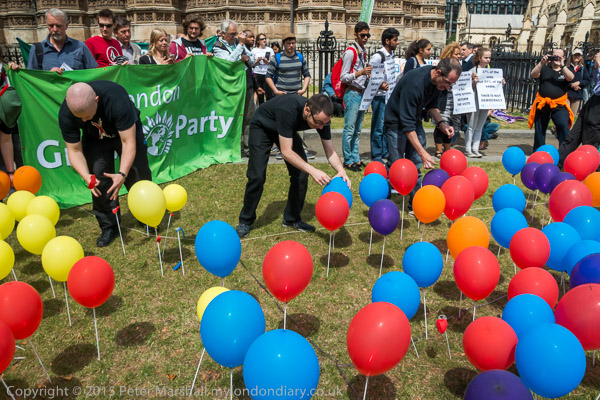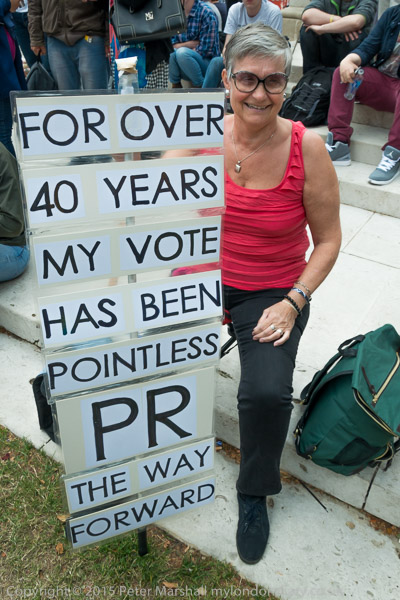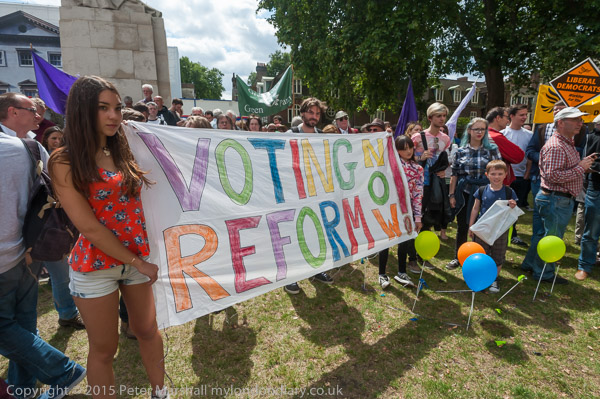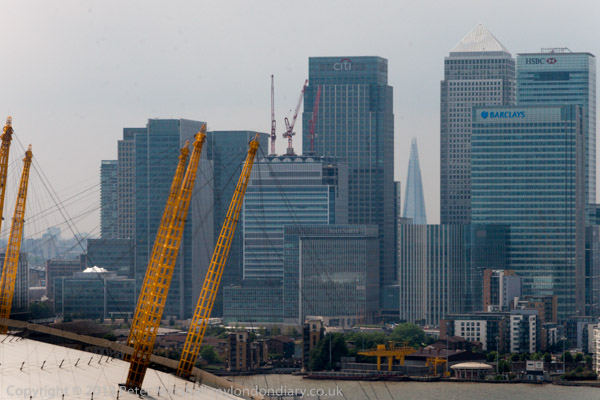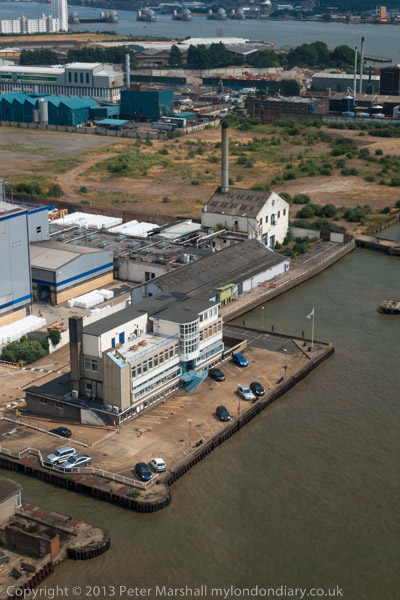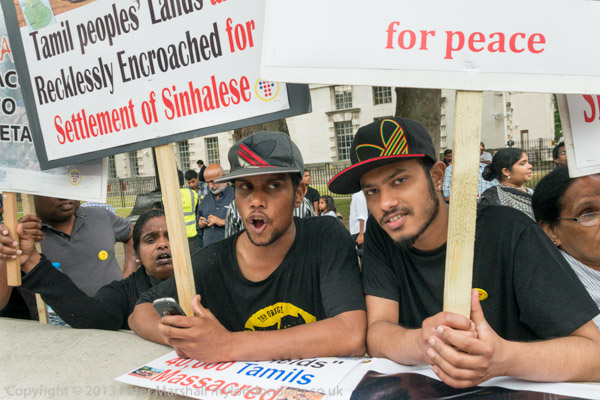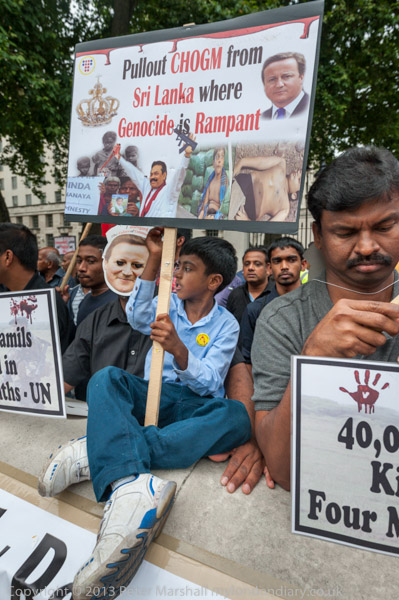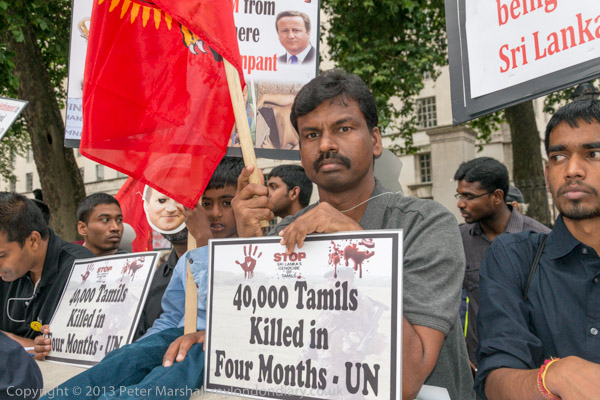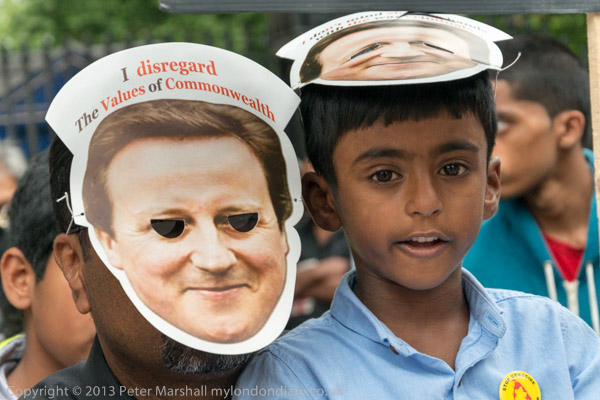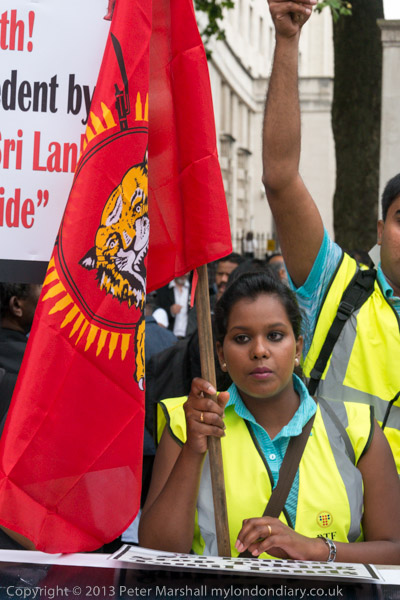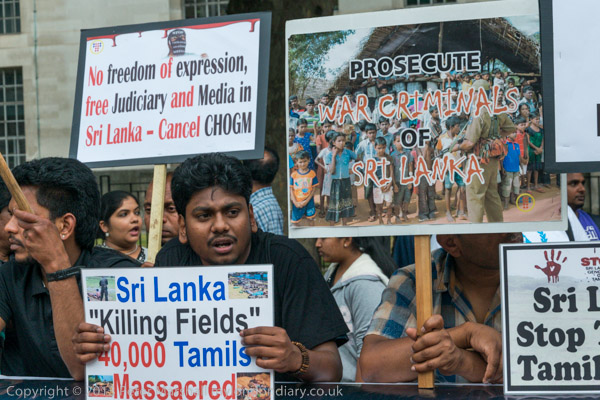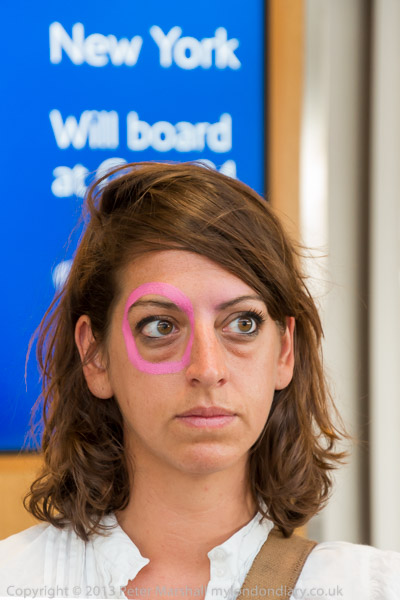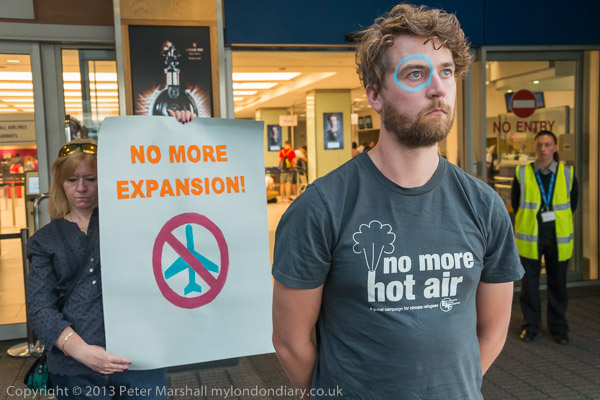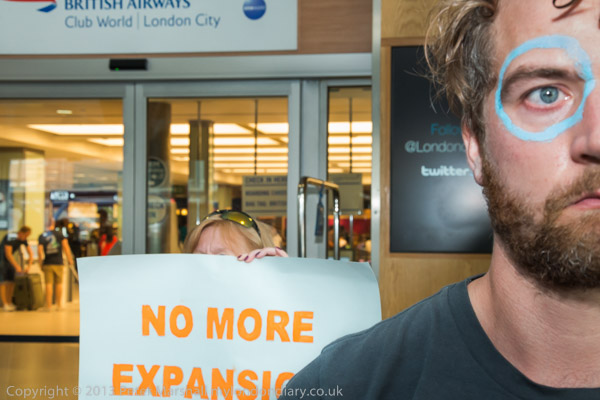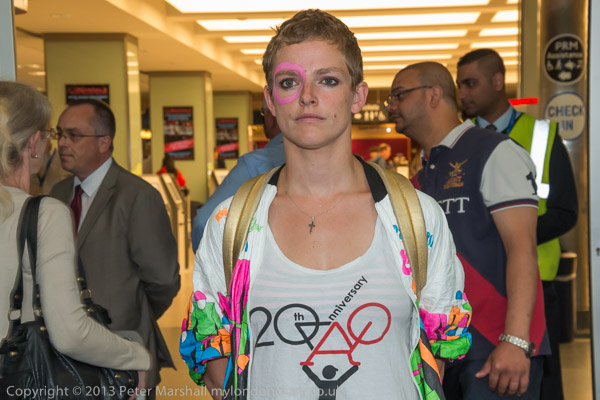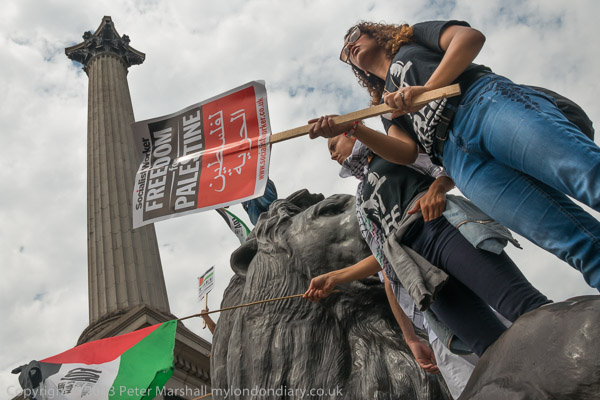Stop the Massacre in Gaza – Sat 26 Jul 2014.
Following a number of incidents which had led to growing tension between Israel and Hamas, the Israeli Defense Forces (IDF) launched a full-scale ground invasion of the Gaza Strip on 17th July 2014 which continued until 5th August, with a ceasefire being announced on 26th August.
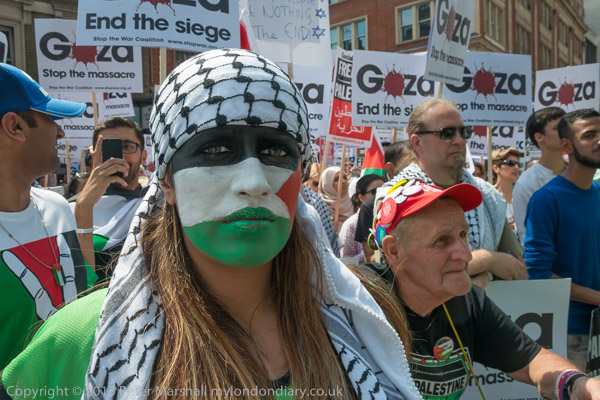
During the weeks of the attack over 2,000 Palestinians were killed, around 70% of them civilians, and over 10,000 seriously injured. 67 Israeli soldiers and 5 civilians were killed and 730 Israelis injured. Terrible as those numbers were, they seem small when compared with the current genocide taking place in Gaza.
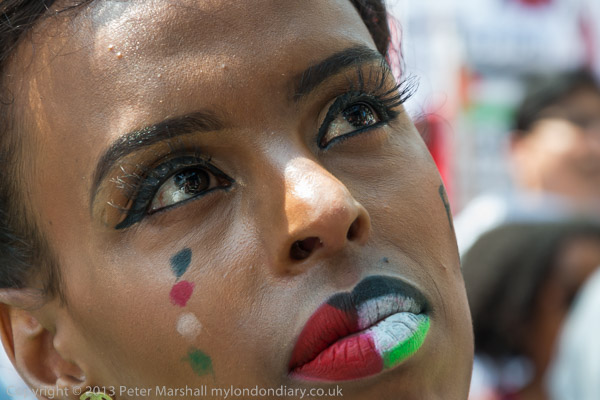
Israel also systematically destroyed many homes. Wikipedia states “The UN estimated that more than 7,000 homes for 10,000 families were razed, together with an additional 89,000 homes damaged, of which roughly 10,000 were severely affected by the bombing.”
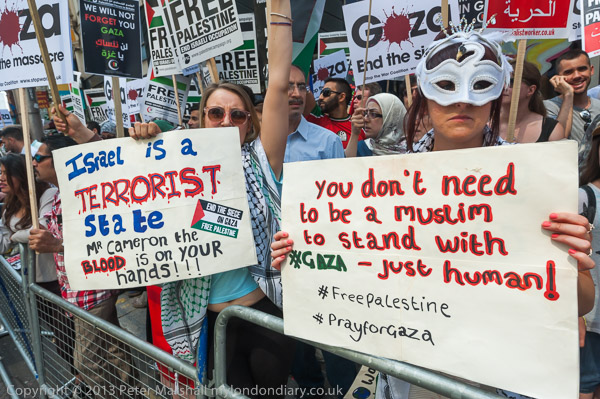
On 26th July thousands of people had arrived for a rally on Kensington High Street, as close as protests were allowed to the Israeli Embassy. Police tried hard to keep traffic flowing on what is one of the main routes out of London to the West, but soon the number of people made this impossible.
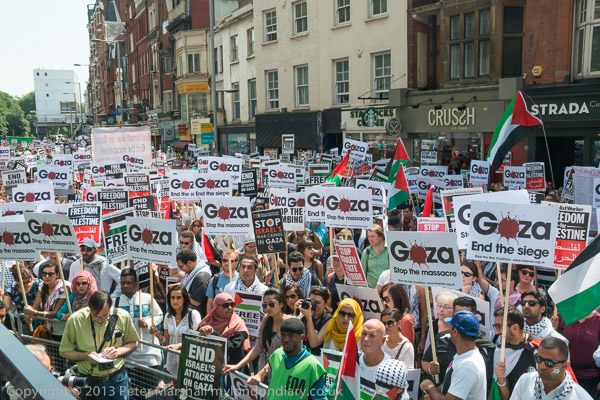
I’d arrived early and was able to get to the stage where there were to be a few speeches before the march moved off. From this platform I could see the road packed with people looking both west and east.
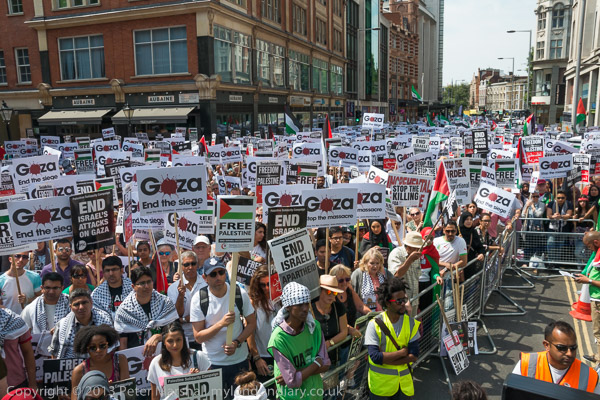
I listened to some of the speeches and photographed a few of the speakers, including Labour veteran Walter Wolfgang and Owen Jones before making my way with some difficulty to front of the crowd around a hundred yards east down the packed road where the main banners were ready for the start of the march.
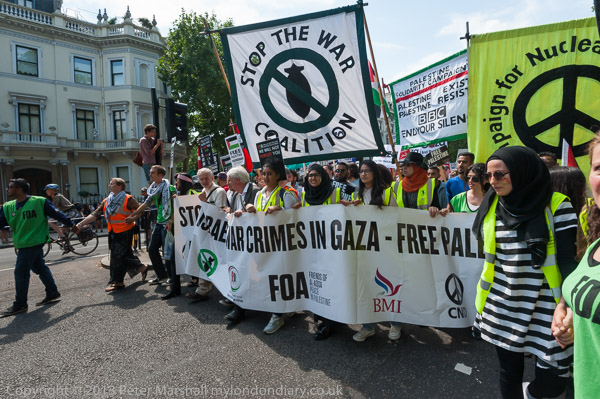
Fortunately I was able to join with a group of those who had been around the stage, including some of the speakers, who were going through the crowd which was extremely tightly packed all across the road. By the time I arrived the area in front of the march had been cleared and I was only able to take pictures of the front of the march by leaning over the arms of the stewards as the march started.

Behind the front of the march I was able to go into the march and take some pictures as I walked back in the opposite direction towards the tube station.

Among the banners on the marchwas one carried by the Turkey Youth Union: ‘TURKISH GOVERNMENT SUPPLIES JET FUEL TO ISRAEL – ERDOGAN RESIGN’. Much of that oil was coming from ISIS, who were largely financed by their oil sales smuggled through Turkey with the help of leading members of the Turkish government.
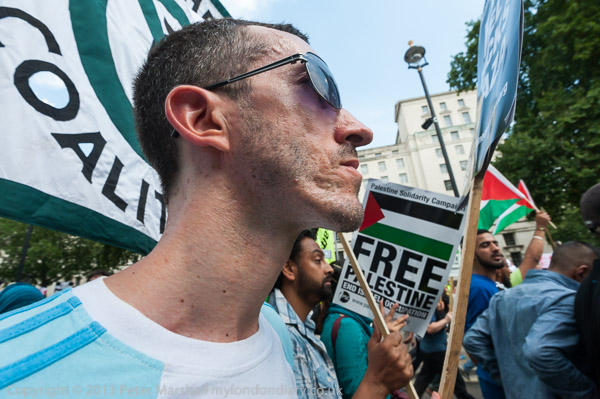
I’d left the march to photograph an unconnected event taking place at Downing St, and walked up from there to meet the Gaza marchers as they turned into Whitehall.
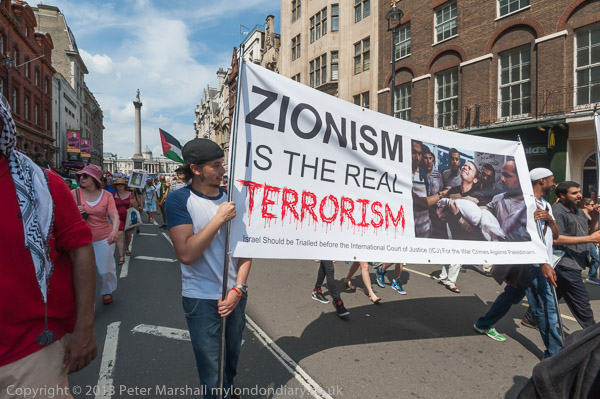
The march paused for a short while opposite Downing St, but stewards again made taking photographs difficult, although the marchers – including Jeremy Corbyn – were rather more cooperative.
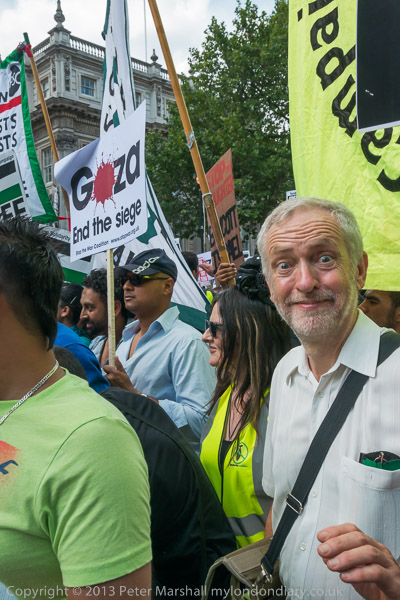
When the front of the march reached Parliament Square one of the stewards who recognised me actually invited me into the area in front of the march to take pictures, and I was able to photograph the marchers with ‘Big Ben’ in the background – always a good clue that this was taking place in London.
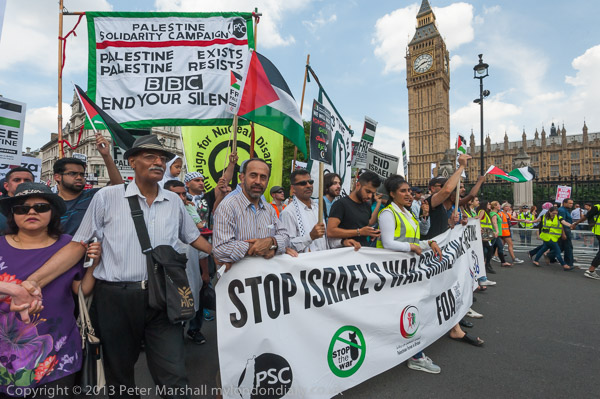
I then photographed the long rally, taking pictures of most of a very long list of speakers including Michael Rosen. I photographed over 15 of them and you can see some of the pictures and a long list of names on My London Diary.
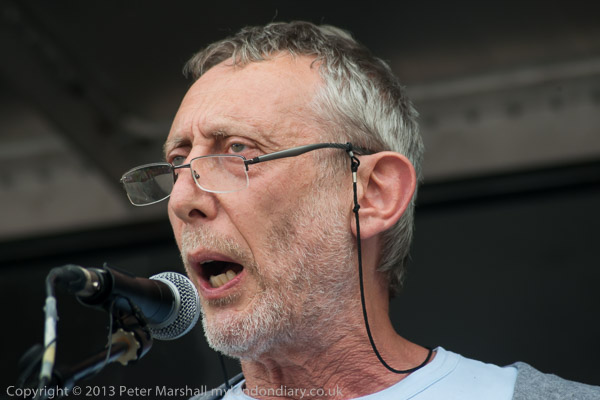
But as usual I was rather more interested in the people and took many pictures of the crowd and people in it, as well as others in the square including the anti-Zionist Jews who walk down from North London to protest at most events in support of Palestine.
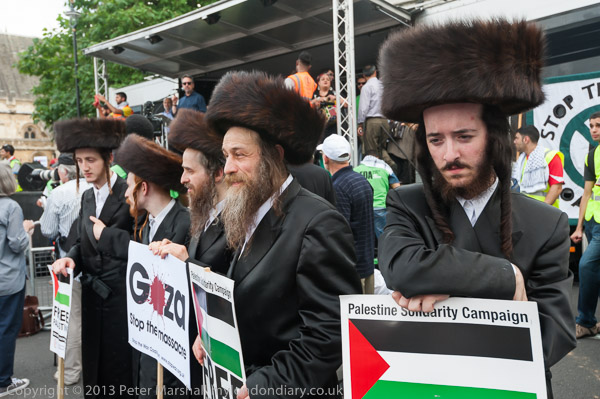
Much more and many more pictures on My London Diary:
Stop the Massacre in Gaza Rally
End Gaza Invasion March to Parliament
Israeli Embassy rally – End Gaza Invasion
Flickr – Facebook – My London Diary – Hull Photos – Lea Valley – Paris
London’s Industrial Heritage – London Photos
All photographs on this page are copyright © Peter Marshall.
Contact me to buy prints or licence to reproduce.
